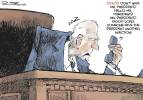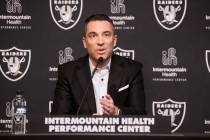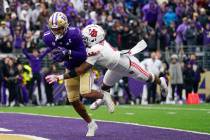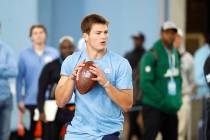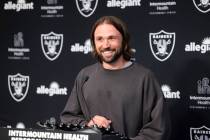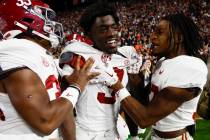Raiders make trade, finish with four picks in final round of NFL draft
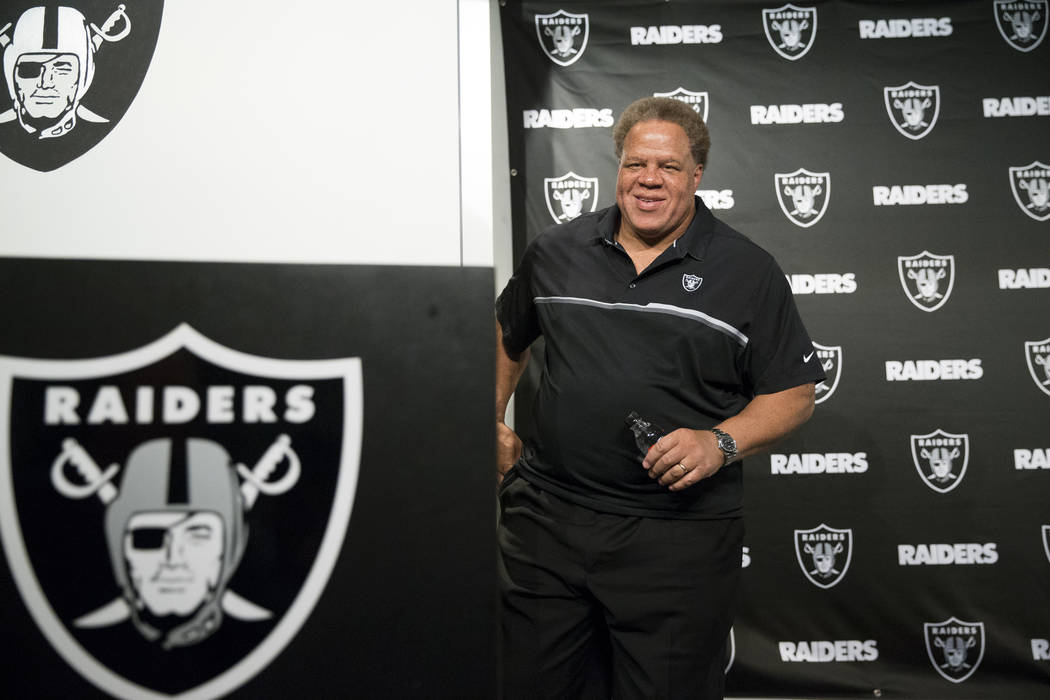

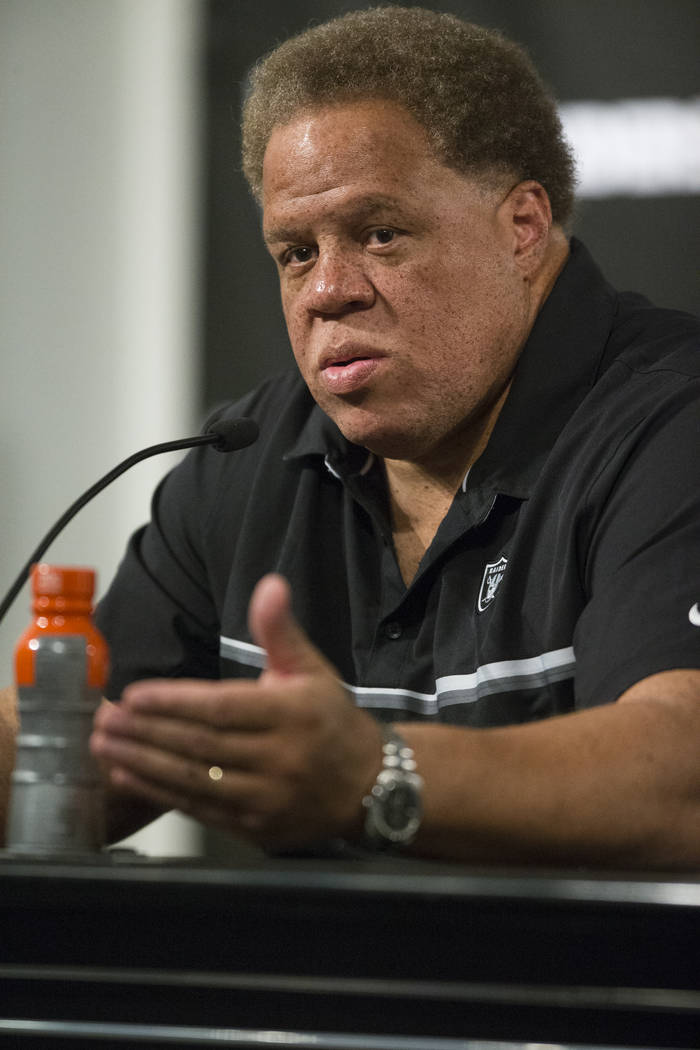
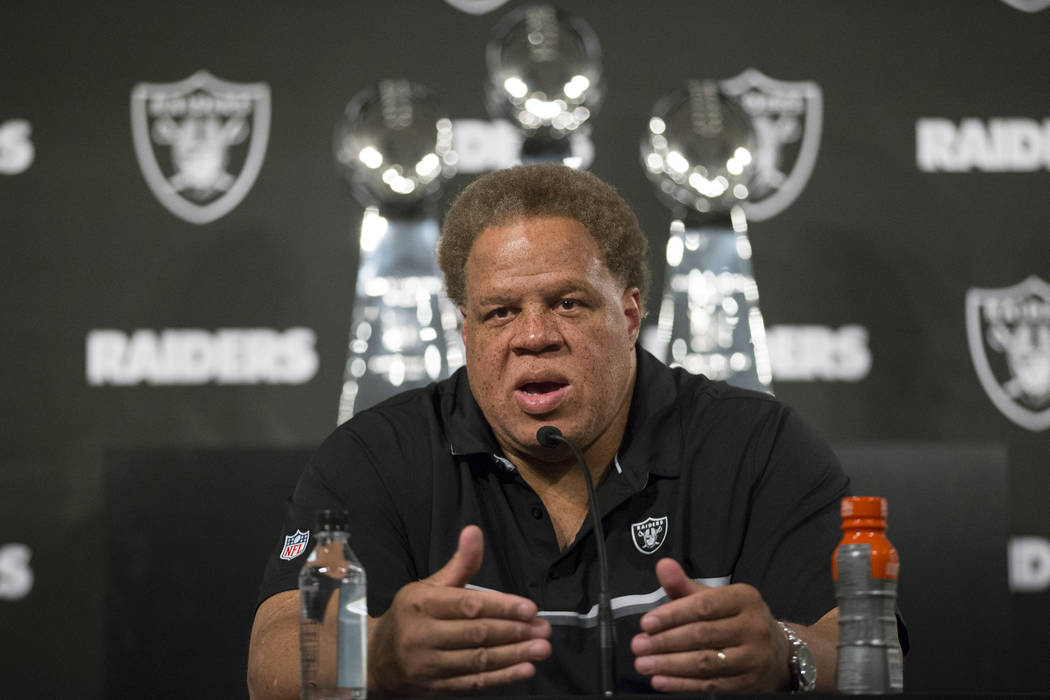
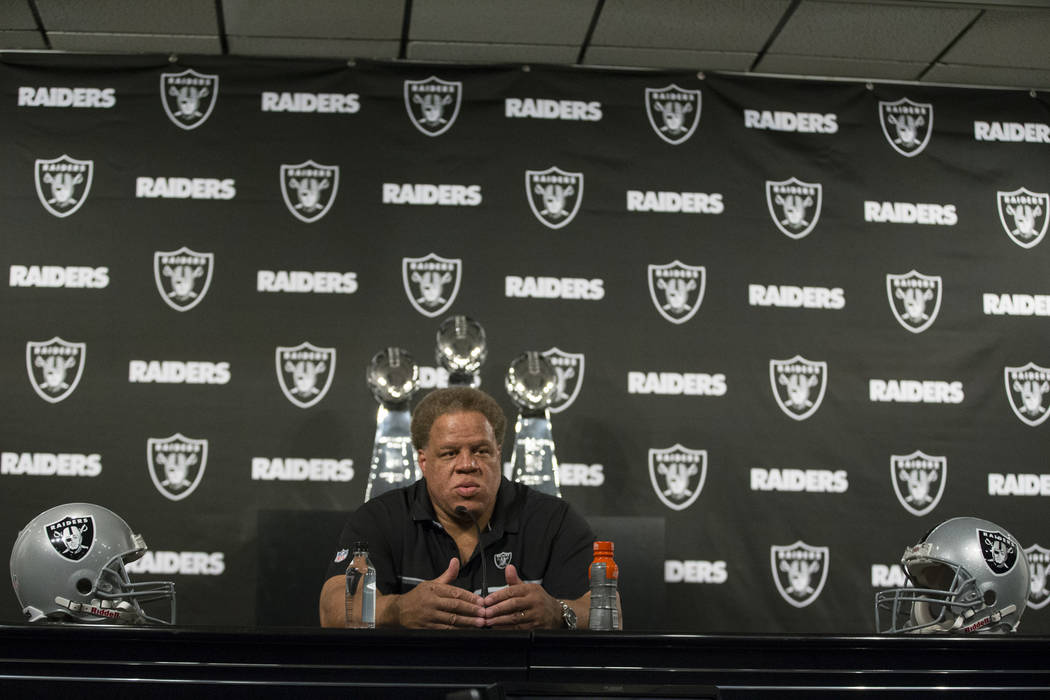
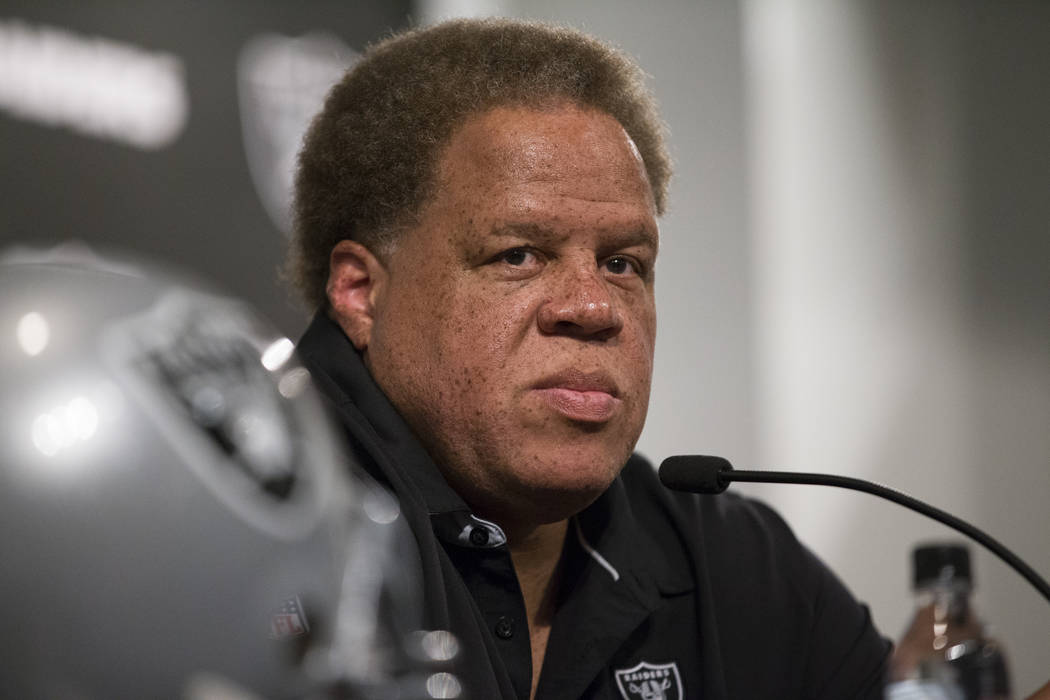
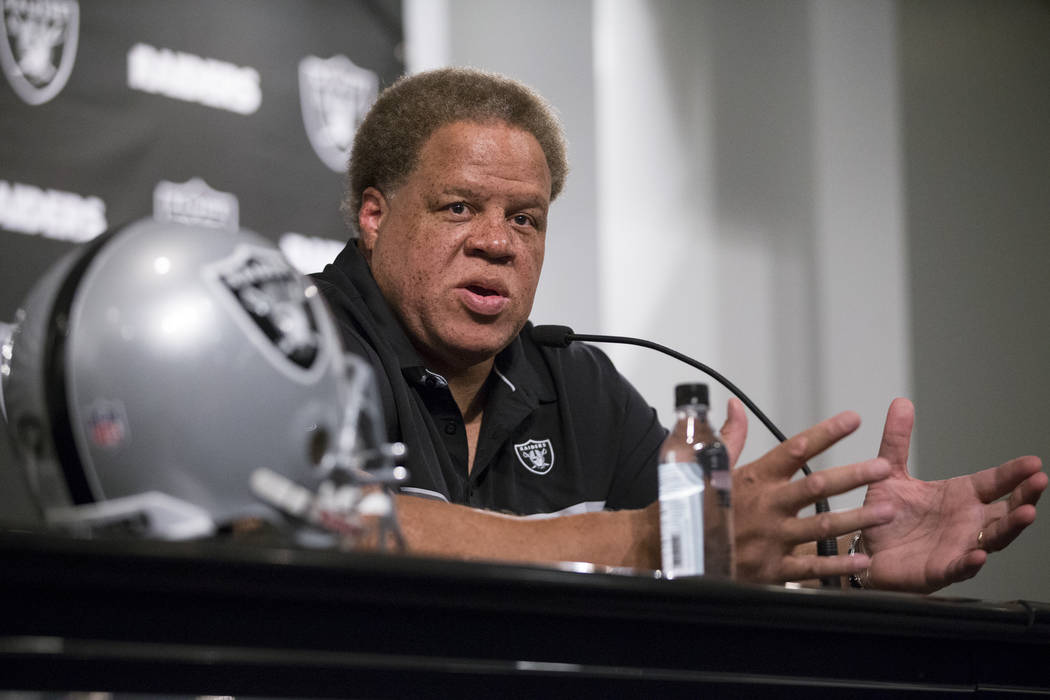
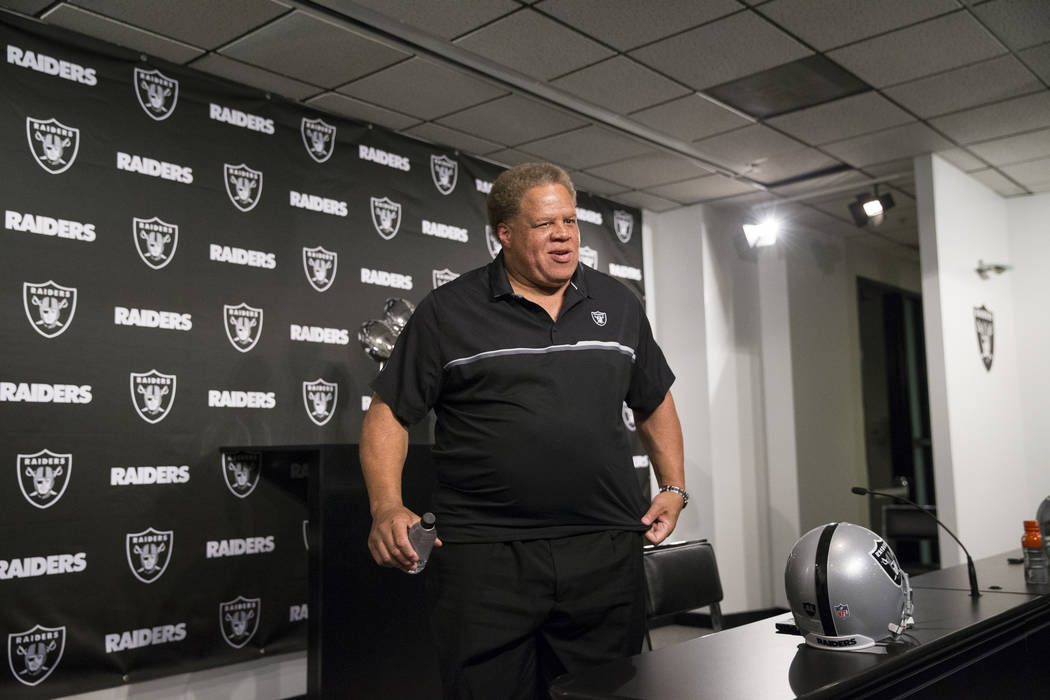

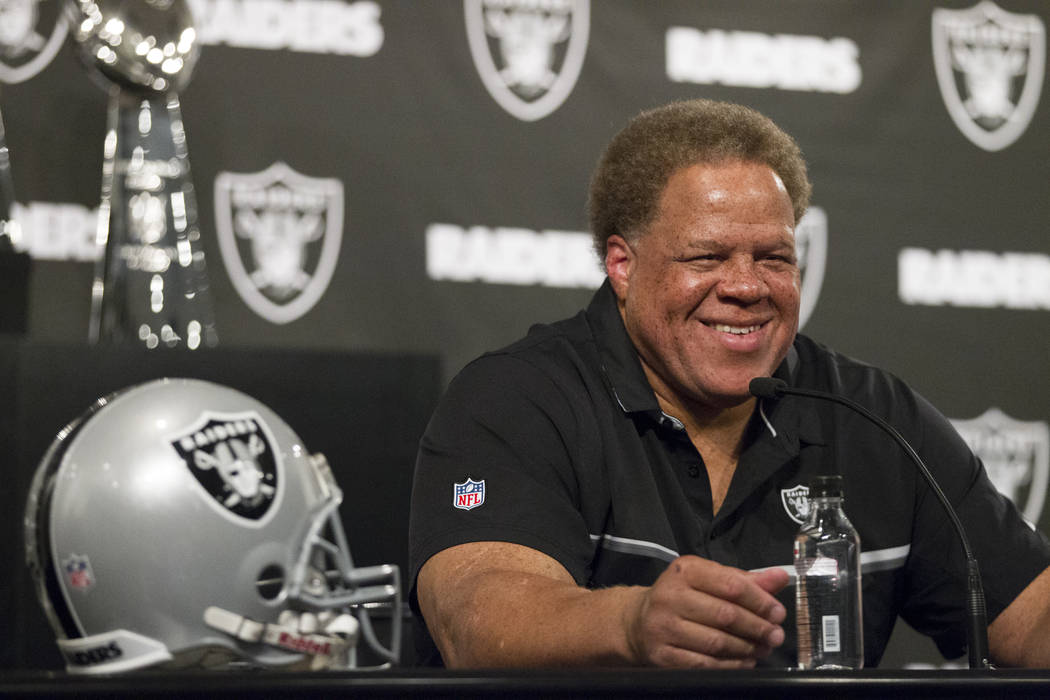

ALAMEDA, Calif. — There is a game Reggie McKenzie often plays within the NFL draft, a late-round strategy game that resembles a shopping spree.
This year, he won.
The strategy is simple. The Raiders general manager, when he deems it in his best interests, hoards picks toward a draft’s conclusion. For example, he selected three players in the seventh round in 2014 and 2015. He took four players in the 2013 sixth round, a cluster from which he chose running back Latavius Murray and tight end Mychal Rivera.
To end the 2017 draft, there he went again.
The Raiders traded a sixth-round pick Saturday for two of the Arizona Cardinals’ seventh rounders. That provided McKenzie four selections in the final round. He selected former Washington State safety Shalom Luani, Alabama State offensive tackle Jylan Ware, North Carolina running back Elijah Hood and Toledo defensive tackle Treyvon Hester, a flurry to complete a draft in which six of nine new Raiders are defenders.
Two other players, Florida left tackle David Sharpe in the fourth round and Wake Forest inside linebacker Marquel Lee in the fifth, were added Saturday.
McKenzie explained the seventh.
When a draft concludes, all 32 NFL teams compete with each other to recruit rookies who went undrafted and are now free agents. This is a frantic, competitive process. Each team has an allotted budget for how much money, in terms of signing bonus, it can devote to its entire undrafted class; in 2017, the number was $98,340. Usually, a team can differentiate itself from another club by the quality of opportunity to compete for a roster spot or by, in the weeks and months before, having built a rapport with the player.
McKenzie collects late-round picks because they allow him to acquire players he covets while skipping the competition.
“When we feel that we have more priority free agents that we really like than one particular player that we just have to get, I’d rather get the numbers,” McKenzie said. “Sometimes I like three guys more than I’m just gung-ho about one. That’s the case this year. There were a lot of guys I really wanted to add to the roster, so when I had the opportunity to make a trade, I did so, and I was still able to get the players that I coveted.”
Fourth-round pick Sharpe has many positive physical traits.
He found himself dismissing Saturday a negative trait that he said was overblown.
In his youth, the now 6-foot-6-inch, 343-pound lineman had a cataract removed from his right eye. Following his selection, NFL Network analyst Mike Mayock said Sharpe is believed to be almost legally blind in his right eye, so he may be unable to become an NFL right tackle.
“I’m not blind,” said Sharpe, who started all 13 games at left tackle for the Gators in 2016 as a junior. “I’m not legally blind. The information is just false; all of it is false. … (The cataract removal) doesn’t affect my play or vision or anything. I’m not blind. … (My right eye) is a little blurrier, but not much.”
In the fifth, the Raiders finally added an inside linebacker, one of their top positional needs.
Lee is a physical run stopper, a 6-3, 240-pound prospect who also figures to contribute on special teams. He started 21 of 38 career games at Wake Forest. Last year, he totaled 105 tackles, 20 of which were for a loss, with 7 1/2 sacks and three forced fumbles.
McKenzie began the seventh by bringing Luani to the Bay Area.
This is not Luani’s first visit.
The former American Somoan soccer player attended City College of San Francisco, where 247Sports ranked him as the No. 1 junior college safety in the country. He transferred to Washington State and started all 25 career games the past two seasons, intercepting four passes in each. McKenzie spoke highly of his play-making ability. Luani also should be a factor on special teams.
Ware became the second offensive tackle the Raiders drafted Saturday. There is talent there, but this clearly will be a project as he works to build onto his 6-foot-7, 317-pound frame. Ware has done well to be that weight; he played much lighter in college.
Hood was the 27th running back drafted in a deep 2017 class. A physical runner, he said that he’s worked to keep his weight down so that he can play running back in the NFL. He averaged 6.0 yards per carry as a Tar Heel with 430 career carries for 2,580 yards and 29 touchdowns.
Marshawn Lynch is someone after whom he’s modeled his game, Hood said.
“I just can’t wait to be in that running back room with him,” Hood said. “He has so much to offer. He’s a veteran. The way he conducts business, he’s a professional. I feel like I have so many questions to ask him and learn from him about the game and the NFL and what it takes to be successful. … I have nothing but work ahead of me, and I can’t wait to do it. … I can’t wait to be out there in Oakland and Las Vegas.”
Hester became the Raiders’ second interior defensive lineman this draft.
Eddie Vanderdoes, a third-round choice from UCLA, was the other. Hester had a strong senior year in 2016, having shed weight to become more explosive. He set career highs with 49 tackles, 9 1/2 tackles for loss and 10 quarterback pressures.
Contact reporter Michael Gehlken at mgehlken@reviewjournal.com. Follow @GehlkenNFL on Twitter.
Raiders’ draft picks on Saturday
David Sharpe
Pick: Fourth round, 129th overall
Position: Offensive tackle
School: Florida
Synopsis: A swing tackle off the bench must be versatile, able to fill in should an injury occur on the left or right side. The Raiders, who value Sharpe’s 6-foot-6 and 343-pound size, concluded that reports of him being possibly legally blind in his right eye were inaccurate. So, vision won’t be a trait that impairs him from playing right tackle. He spent his college career on the left side.
Marquel Lee
Pick: Fifth round, 168th overall
Position: Inside linebacker
School: Wake Forest
Synopsis: The Raiders knew they needed an inside linebacker, and they took their time to address it in the draft. Lee checked all of GM Reggie McKenzie’s boxes. “No. 1, he’s very instinctive,” McKenzie said. “He plays with strength. He has a feel for the game. He’s got great size. He’s what we look for in a big, middle linebacker.”
Shalom Luani
Pick: Seventh round, 221st overall
Position: Safety
School: Washington State
Synopsis: A youth soccer star in American Samoa who came to love football, Luani very much is still growing in the sport. And yet, there’s a natural feel for the game here. The Raiders hope he can contribute on special teams, as a possibly steep NFL learning curve runs its course.
Jylan Ware
Pick: Seventh round, 231st overall
Position: Offensive tackle
School: Alabama State
Synopsis: Most seventh-round picks are projects. Ware is no different. His technique and narrow physique will take time to develop. Scouts, though, evaluate traits, and Ware has enough to be worth considering for the club’s 10-man practice squad.
Elijah Hood
Pick: Seventh round, 242nd overall
Position: Running back
School: North Carolina
Synopsis: Marshawn Lynch added a physicality to the Raiders’ backfield on Wednesday. So, too, did Hood on Saturday. There is no guarantee he will make this roster; a seventh-round pick is always a lottery ticket. But Hood offers fresh legs behind his running style. He logged only 431 carries in three seasons with the Tar Hells.
Treyvon Hester
Pick: Seventh round, 244th overall
Position: Defensive tackle
School: Toledo
Synopsis: Interior defensive line was among the biggest roster needs. And so, Hester cannot ask for a much better opportunity to earn a roster spot and possibly playing time. The 2016 team captain had a solid showing at the East-West Shrine Game in January.
Michael Gehlken/Review-Journal








